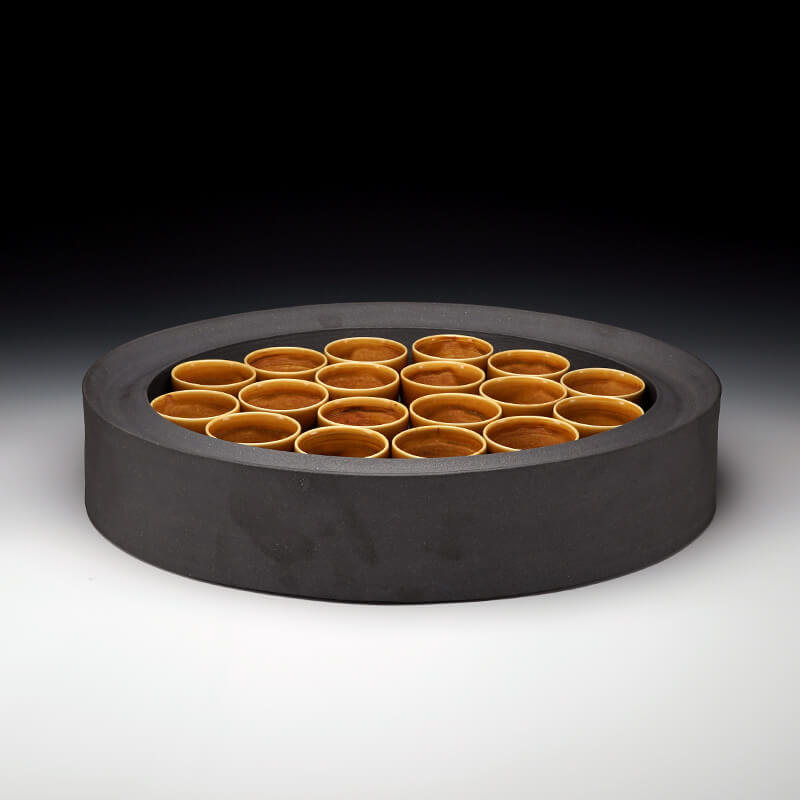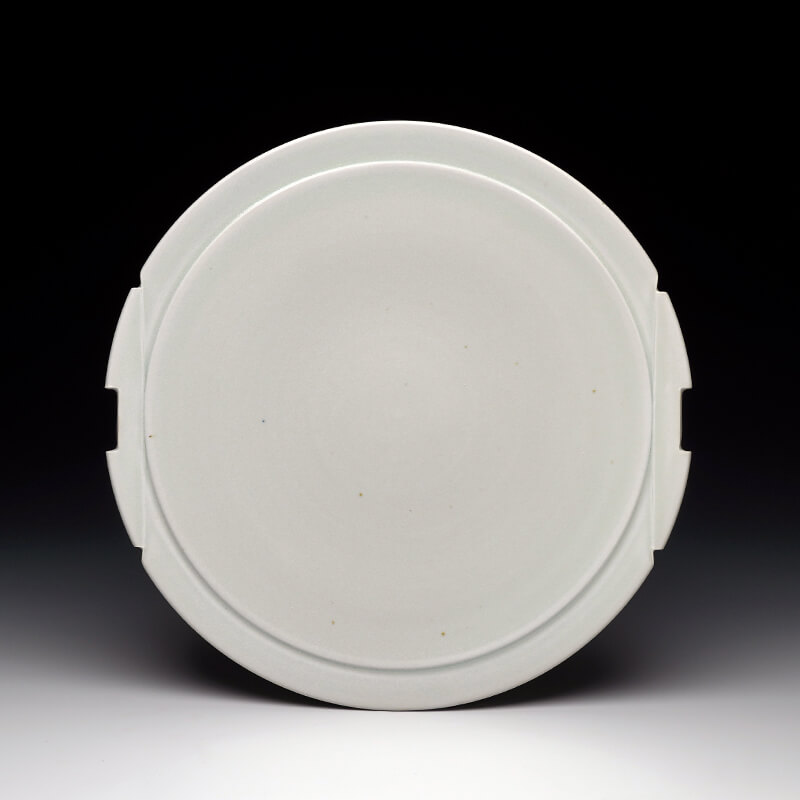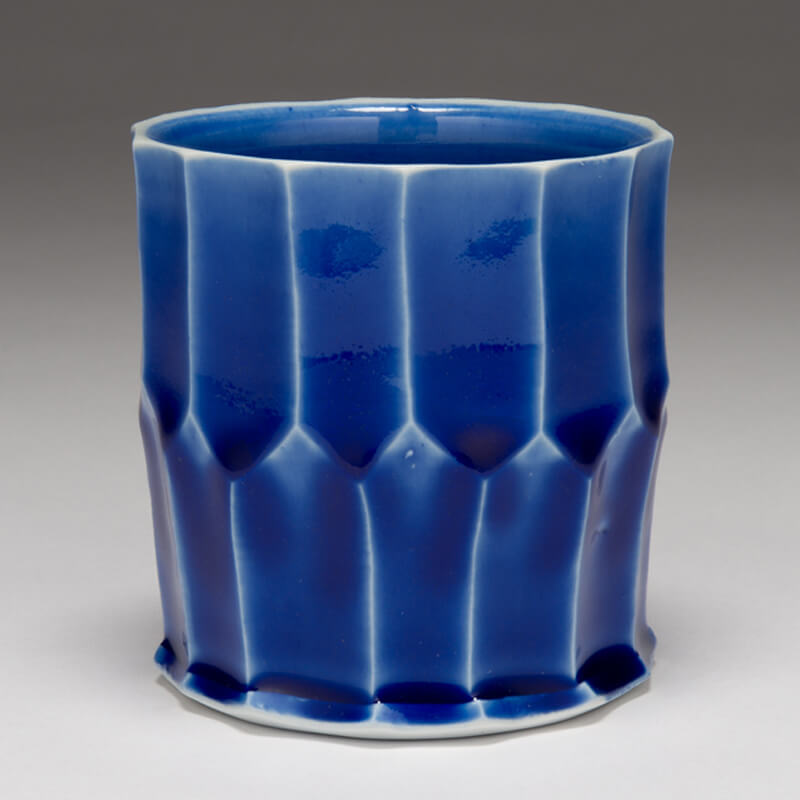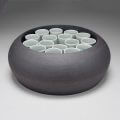
Red Lodge Clay Center – Short-Term Resident (AIA) 2017, 2022
Peter Beasecker was born in Toledo, Ohio and received a BS degree from Miami University and his MFA from Alfred University. He has been recognized for many years as a maker of quiet, elegant porcelain pots reflecting a studied and haptic sensibility. Beasecker’s recent work has concentrated on ‘carriers’, dark stoneware vessels holding numerous porcelain cups or bowls. He also continues his porcelain work making simple plates, bowls, and vases.
Peter Beasecker joined the faculty of Syracuse University’s College of Visual and Performing Arts in 2009 as an Associate Professor. Prior to this appointment, Beasecker was a Professor of Art at the Meadows School of the Arts, Southern Methodist University, since 1992. He has exhibited extensively in national and international venues, and his work is included in the collections of the Renwick Gallery of the Smithsonian Institution, The Minneapolis Institute of Art, and the Mint Museum in North Carolina. He has been a visiting artist and workshop leader at over sixty institutions, including Anderson Ranch, Arrowmont School of Arts and Crafts, Haystack Mountain School of Crafts, and the Penland School of Crafts. Beasecker maintains a studio in Cazenovia, New York.
As an artist working primarily with the vessel, I explore and develop ideas through multiples. Repetition is at the heart of this. Concentrating my efforts on a particular series of forms affords me the opportunity to define and clarify my thoughts, as well as to solve problems in a sequential order. My investigation of form is strongly influenced by the plasticity of the material and immediacy associated with wheel-thrown work. Searching the parameters that surround the balance between beauty and use is both a very real and aesthetic challenge for me.
My current body of work reflects my desire to make a simple, direct object having a restrained and studied elegance. I use high-fired stoneware and porcelain not only for the intensity it lends to line and color, but also for the permanence and purity it offers to the gesture and presence of form. I hope the awkwardness of lifting a cup or bowl as it scrapes a wall or the ‘slow’ read of a lid or foot will provide a subtle catalyst for seeing and feeling a new relationship with something as familiar and ordinary as a cup.
















